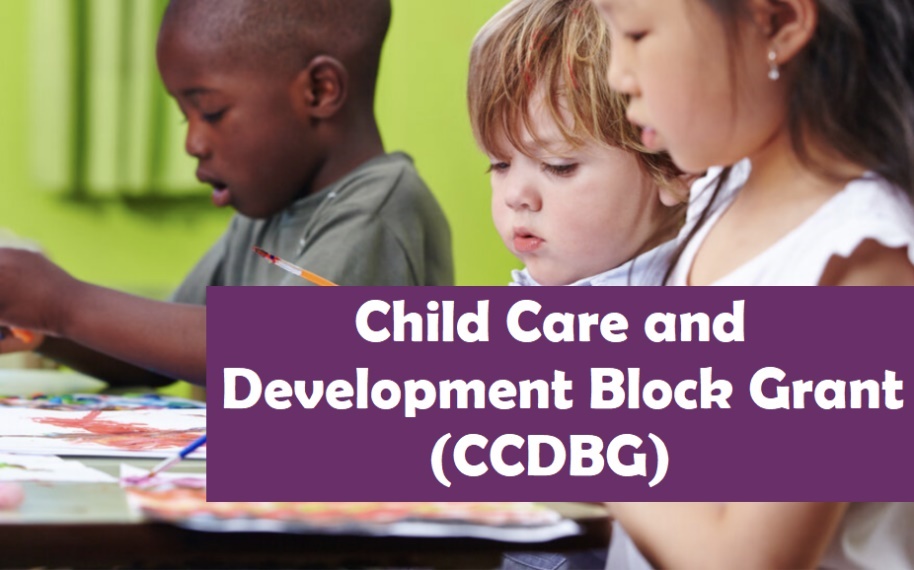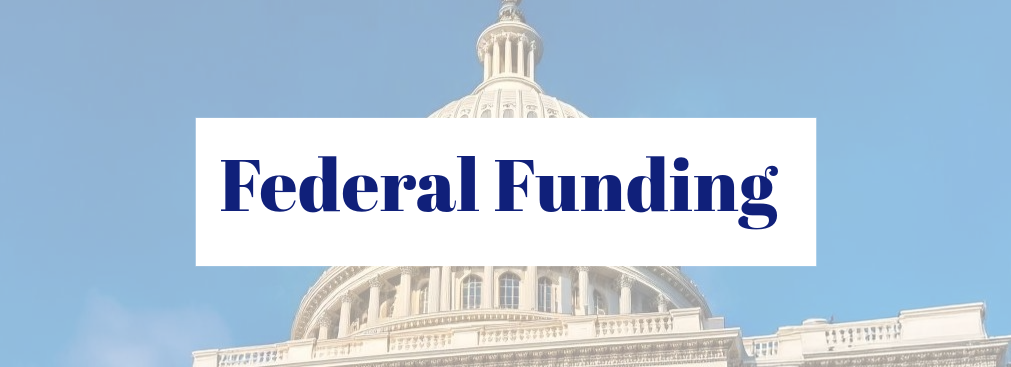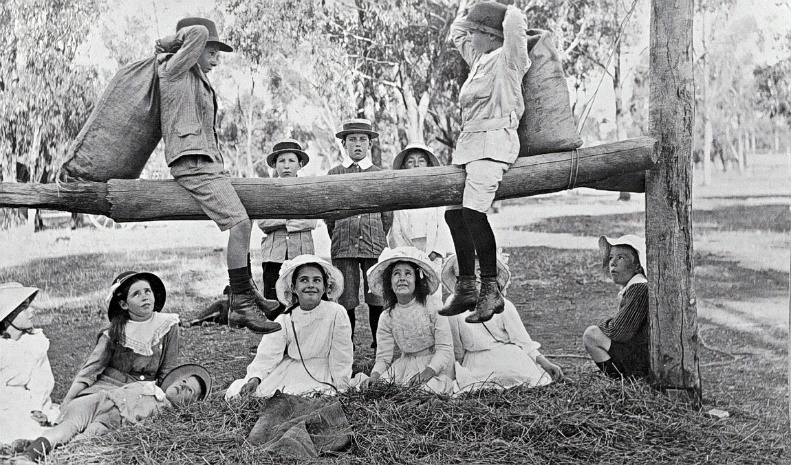Historical Overview of the Field of Early Childhood Education
|
Topical Outline |
Colorado Standard Competencies |
|
History in early childhood
|
Demonstrate basic knowledge of national, state, and local regulatory agencies and quality initiatives
|

Vocabulary Standard Competency: Explain basic early childhood and early childhood special education terminology |
| Advocate: A person who publicly supports or recommends a particular cause or policy.
Bias: Showing favor of or against one thing, person, or group compared with another, usually in a way considered to be unfair. Code of ethics: A set of guidelines for responsible behavior within the field. Sets forth a common basis for resolving the principal ethical dilemmas encountered in the field of early childhood education. Inclusion: The act or practice of including all students in the classroom community. Morality: People’s views of what is good, right, or proper: their beliefs about their obligations and ideas about how they should behave. NAEYC: National Association for the Education of Young Children—a national association dedicated to the services for children birth – age 8. Temperament: A set of inborn traits that organize the way we approach the world. Values: Principles or standards that a person believes to be important, desirable, or worthwhile. |
Introduction
The field of Early Childhood Education has a rich history. As you will soon discover, history has not only provided us with a solid foundation, but it has also shaped our beliefs, instilled an appreciation for children, and provided us with a context that guides our current practices. It is hard to imagine that children were not always considered valued members of society. You might say children were thought to be second class citizens. In the past, many believed that children should be seen and not heard, and that children should be ruled by might (e.g., “spare the rod spoil the child”). Often, children were punished harshly for behaviors that today we understand to be “typical” development.
In the past, childhood was not seen as a separate stage of development. There was not time for childhood curiosity and playful experiences. Children were thought of as little adults, and they were expected to “earn their keep”. The expectation was that they would learn the family trade and continue their family lineage.
Going to school was thought to be a privilege and only children of a certain class, race and status were given the opportunity to have a formal education. The primary curriculum for that era was based on biblical teachings and a typical school day consisted of lessons being taught by an adult in charge who wasn’t trained as a teacher.
Historical Roots
Many of our current ideas in educational philosophy are built on ideas and theories of the past. The roots of early childhood education go as far back as Plato (428-348 BC) who was a Greek philosopher that believed that the teacher’s role was to direct children through play towards “their final aim in life”. Dr. David Elkind believes that the field of early childhood education is “the most holistic and least differentiated of any level of education” due to the solid grounding in philosophy, theory, and research. Theorists most noted in the field say is that what makes early childhood education unique is that it starts with the child, and not with the subject matter (Elkind, 2010).
The Origins of Early Childhood Education
The philosophical foundation of early education includes the early work of many individuals including Czech philosopher John Amos Comenius (1592-1670), British philosopher John Locke (1632-1704), and Swiss philosopher Jean Jacques Rousseau (1712-1778) in addition to many other European and American philosophers that will be discussed. Alongside these philosophical applications, the field is grounded in research through education figures such as Swiss psychologist Jean Piaget (1896-1980), German American psychologist Erik Erikson (1902-1994), and German educator Friedrich Froebel (1782-1852), as well as European theorists and educators all of whom have contributed to Western approaches in early learning.
It wasn’t until after World War II that early childhood education came to be seen as an important foundation to every child’s educational pathway, the roots of which are based in humanism. This thought process has the concern for the well-being of all humans which eventually contributed to what we know now as developmentally appropriate practice.
Implication of Human Learning Theory In Class
- Curriculum must be learner-centered
- Knowledge should be applicable
- Emphasize learner development
- Learning must be student-centered
- Experiments and discovery must be used
- Teaching should be intrinsic
The timeline illustrates the progression of thought from some notable theorists that have contributed to the field of early childhood education from Ancient Greece to the first Kindergarten funded in the United States. As you look at the timeline, think about how the philosophies of each time period have influenced current thinking.
Origins of Child Care in the United States
In the United States today, many women with young children are employed outside of the home. The necessity (or choice) to work outside of the home has created a need for care for young children during working hours. The term “day care” was used historically to refer to the working hours teachers were in classrooms. Today, professionals prefer the term childcare as it is more inclusive and reflects the important work of nurturing the child.

Childcare can be traced to New York in 1893 when the National Federation of Day Nurseries, the first nationwide organization devoted to childcare, began. The care at that time could hardly be labeled “quality” and so a set of progressive women began the U.S. Children’s Bureau in 1912 to set policy for quality childcare (Michaels, 2019). The Depression had an impact on childcare as unemployment rose. During Roosevelt’s New Deal, a program of Emergency Nursery Schools (ENS) grew but were open for only part of the day. By the end of the 1930’s high staff turnover rates forced the closure of many of the ENS. With the approach of World War II, the unemployment crisis dropped, and many women went to work for the government to support war efforts. However, it was not until 1943 that support for childcare financially entered government conversations and Congress allocated $6 million dollars to reopen ENS (Michaels, 2019). In 1944, only 3,000 childcare centers were operating, yet capacity for 130,000 children was needed. This lack of care during the day began the spread of the “latchkey child” and often children were found sleeping in locked cars in company parking lots while mothers worked (Michaels, 2019).

In 1954, The childcare tax deduction allowed low to moderate income families to deduct expenses for childcare from their income taxes and a program entitled New York Women (led by Elinor Guggenheimer) helped to establish a licensing system for childcare that eventually grew across the U.S.
In the 60’s, federal support for childcare was tied to policies designed to encourage poor and low-income women to enter the workforce until a group of labor leaders, civil rights leaders and early childhood advocates worked with Congress to legislate universal childcare policy. These efforts failed under President Nixon and as a result, direct federal support for childcare was limited to low-income families.
In the 80’s President Reagan shifted funding and the passage of the Child Care and Development Block Grant allocated funds to support individual states. The issue with this was that even though there were increased funds for childcare, problems with supply and quality for lower income families became difficult, and middle-income families faced childcare centers with high turnover rates of childcare employees due to low pay and poor benefits.

In the late 1990s, funding through welfare reform initiatives such as the Family Medical Leave Act provided some childcare relief dollars for families. However, existing federal childcare policies have gone unchanged since the 50s and do not meet the needs of the working families of today.
There are hundreds of private advocacy groups in the United States that are interested in early childhood education and the policies that support quality and equity for all families today, but most research agrees that the system of childcare is a fragmented system.
Government Funding that Supports Early Learning

For more than 80 years, the federal government has invested in childcare and early childhood education programs to support parents and children and to help them to succeed. Over time, as society has changed, so has the amount of funding and the names of the funding programs. There is no doubt that as our society continues to change, so will the need for funding children and families across the United States.
From a historical point of view, the United States is in the middle of a childcare revolution of sorts, as increased children under the age of six are cared for by someone other than their parents. Historians have known for at least two centuries that the well-being of all children depends on the quality of care received in the early years. Some people believe that as a system, we have failed to act boldly on that knowledge within the government arena and money to support all children is inequitable.
During the 19th (and early 20th) centuries, a two-tiered system of early childhood education types of programs evolved in the United States. One tier had roots in social welfare systems while the other was rooted in the education system providing “preschool” education for middle-and upper-class children (Cahan, 1989). During the last century, the federal government has vastly expanded its role in early childhood education (Yarrow, 2009).

As previously mentioned, in 1933 the first federal investment in childcare was made in response to the Great Depression. The Emergency Nursery School program provided childcare for the children of people working government paid jobs and by 1935, the Aid to Dependent Children program was included in part of the President Roosevelt’s New Deal. During this time, many childcare centers were open seven days a week for 12 months a year and even provided infirmaries for sick children and hot meals for families to take home after work. This all sounds wonderful, but one must remember that it took two wars and demands on the workforce for the government to make such meaningful resources for working families.
After World War II, expansion of public kindergarten began, and the government funded programs for low-income children through Head Start funding and federal childcare subsidies. The goals for the funding was to prepare children living in low-income households for elementary school, and now Head Start offers a range of comprehensive services to strengthen families. In 1994, Early Head Start was created to support pregnant women, infants, and toddlers through age three.
In 1974, Federal dollars helped to create the Social Services Block Grant, to support parents in the workforce by supporting childcare services and in 1990 this program was extended to families with incomes that did not qualify under previous income guidelines. President Bill Clinton signed a law that brought welfare reform to working families in 1996 under a program called Temporary Assistance for Needy Families (TANF) program.
Over the past two decades, as we learn more about children’s brain development and research into quality early learning experiences filter into the government scene, Congress is increasing funding for already existing programs. Head Start has had an increase from 6.8 to 10.6 billion dollars to serve over 1 million children from birth to age 5 and the Child Care and Development Fund (CCDF) program saw an increase to 8.1 billion dollars to serve 1.3 million children and 769,000 families each month (bipartisanpolicy.org).
The role that an individual state plays in childcare comes from state involvement in both federally funded and state-initiated programs. For example, not all states match federal funds allocated to some federally funded programs and states can determine the eligibility criteria for participation in federally funded programs.
Today’s Trends Bound to History

Some of the historical trends discussed in this chapter apply to early learning today: the field still believes in the importance of play (Plato), that early learning is the foundation for all education moving forward, and that children grow best in environments that are nurturing and supportive. In some cases, the financial aspects that impact the field are yet to be known. New governmental regulations came into play as society shifted in 2021 after surviving a global pandemic. Looking back historically can help us predict what lies ahead.
Educational Trends That Have Influenced Early Childhood Education
In the 2013 State of the Union address, President Barack Obama stated “in states that make it a priority to educate our youngest children . . . studies show students grow up more likely to read and do math at grade level, graduate high school, hold a job, and form more stable families of their own. We know this works. So, let’s do what works and make sure none of our children start the race of life already behind” (White House Archives, 2013). This public address started a conversation about what the United States values in terms of early learning initiatives as it was the first time that early learning was specifically called out in a presidential address.
If you were to do an internet search for “trends in early learning,” the results would be long and varied with a variety of opinions from an assortment of resources both inside and outside of the field of early learning. In addition, it is likely that you would see lists of initiatives that will shape the future of early learning, as well as trends that impact children directly and those that are in place to support families.
Keeping that in mind, it becomes a difficult task to sort out how today’s decisions will impact tomorrow’s children. When looking at trends, however, two things become noticeably clear: it is necessary that a unifying message that includes all children is essential, and that advocacy for this movement is critical.
One way that the United States has moved toward improving consistency and trying to create quality in childcare is through a quality rating improvement system, also called QRIS. This state-by-state initiative attempts to address the priorities that former President Obama spoke about in his state of the union address.
Societal Changes
As society changes and as we learn more, so do the issues and trends being discussed within the field of early childhood education. Often, the concerns professionals have in the field historically have been reflective mirrors of those societal changes and sometimes these changes have positive or negative impact. For example, in response to rapidly growing global awareness and the increase of culturally responsive and anti-bias curriculum, teachers are becoming more aware of how their classrooms must reflect the communities in which they work. Certainly, the historical nod to play based learning will again become a focus of our work as increasingly young children are exposed to technology at an early age. And we certainly have yet to see the impact of the current global pandemic and the impact it will have on children and families as we move to a nation that becomes healthy and safe again.
But the largest focus for the past few years in the field has been the diverse communities in which we work and live and how those communities need to be supported. NAEYC released an equity position statement in 2019 that clearly communicates that all children have the right to equitable learning opportunities. Many people within the field agree that we must respond to the changing societal landscape and the funding for early learning should support this work.
Early Childhood in Colorado
For the past 30 years, the state of Colorado has made progress in the support of young children and families. The Early Childhood Colorado Framework (Early Milestones Colorado, n.d.) was created to link and integrate the systems throughout the state that were working to improve services and policies. The developed a checklist to guide important considerations about family support and education, health, and well-being, and learning and well-being in relationship to policy, practice, and research so that every community across Colorado can provide an environment where children and families can flourish. In 2011, the Colorado Early Childhood Commission worked with Mid-Continent Research for education and Learning (McREL) to develop a set of guidelines for ages birth through age 8. Stakeholders from across the state developed guidelines that reflected a strong research base, enhanced early childhood systems, and met the needs of diverse populations and purposes. They are designed to show the continuum of development while complementing the variety of expectations and models being used in the state of Colorado with each age group.
“By including the full breadth of children’s development, addressing diversity, and aligning content across all early childhood settings and early grades, these guidelines are intended to effect greater collaboration and consistency across early childhood systems in Colorado. With collaboration and common reference points, we can create positive early childhood environments that lay a critical foundation for our young children’s later success.” (Colorado Early Learning and Development guidelines)
The Colorado Early Learning and Development Guidelines
- Focus on children throughout the birth to age 8 continuum;
- Include all areas of development and learning;
- Recognize and are responsive to variations in cultures, languages, and abilities;
- Recognize and are responsive to variations in a child’s and family’s developmental trajectories and environments;
- Apply to a variety of settings including, but not limited to, child care, preschool, Head Start, K–3, health care, home, and other community settings;
- Provide targeted information for parents, caregivers, teachers, higher education personnel, early interventionists, health providers, home visitors, early learning professionals, and family educators;
- Include strategies based on research or promising practices; and
- Complement and align with the Preschool–3rd grade portion of 2020 Colorado’s P–12 academic standards and the 2015 Head Start Early Learning Outcomes Framework, as well as build from other relevant state and national initiatives.
When looking at the field of early learning in Colorado, it can be overwhelming to consider the huge variety of program approaches, settings, and models found within the field. The place to begin is the Colorado Department of Early Childhood website. You can review:
- Find Child Care
- Colorado Child Care Assistance Program
- Early Intervention for Infants and Toddlers
- Family Support Programs
- Head Start and Early Head Start
- Learning and Development Guidelines
- Other Assistance Programs
- Safe Childcare Resources
Program Evaluation (Colorado Preschool Program Handbook, 2015)
School districts and their CPP councils are required to design, implement, and report on program evaluation activities as defined in the CPP rules:
- Program Evaluation. This section addresses the design for this program evaluation including:
- child progress
- parent satisfaction
- the extent to which a comprehensive program is in place
- monitoring
An analysis of child progress results is one component of a comprehensive program evaluation and should inform continuous quality improvement planning. Ongoing preschool assessment results and K-12 assessment results for CPP graduates should be analyzed in order to understand trends and underlying needs of the program.
Family satisfaction is measured through the use of a satisfaction survey but can also be informed through interviews and focus groups. Satisfaction survey items should inform families about what quality looks like and ask about their experiences with these quality indicators. Survey items should be rooted in the Quality Standards and, at a minimum, should ask families to rate items such as:
- Our program asks for my opinions and observations about my child’s progress.
- Our program helps me know how to support my child’s development and learning.
- Our program offers opportunities for me to get involved in my child’s education.
- Our program includes me in decision making about my child’s education.
- Adults in our program respond to children in warm and caring ways.
- My child looks forward to going to “school.” Adults in our program are positive and supportive as they guide child behavior.
- My child’s classroom is well supplied with age-appropriate toys and materials that encourage children to read, pretend, explore, experiment, solve problems and create things.
- My child’s program encourages healthy habits such as healthy eating, exercise, brushing teeth and washing hands.
This section of the comprehensive plan should contain:
- A brief summary of:
- Child progress results using short- and long-range assessment data
- Results of the family satisfaction survey and any other available family input
An overall analysis of the trends, strengths and needs identified by analyzing the results from the four evaluation components and a detailed improvement plan for addressing any identified program improvement needs.
 |
Reflection What societal changes have occured over the past 10 or 15 years that you feel have influenced the field of early childhood education? |
Final Thoughts
The field of early childhood education and the profession of working with young children is a rewarding career with a rich history of teaching, nurturing, and caring for young children. As teachers, our skills and knowledge as well as our personal beliefs and morality shape how we interact with children and families.
Our field is one with historical roots that tie to modern day concepts that are supported both within our state and nationally through efforts to professionalize the field.
One thing is certain: change is all around us in the field, and the profession must respond to the trends. This means we will always strive to do what is best for the children and families we serve and continue to move with the wave of change.

